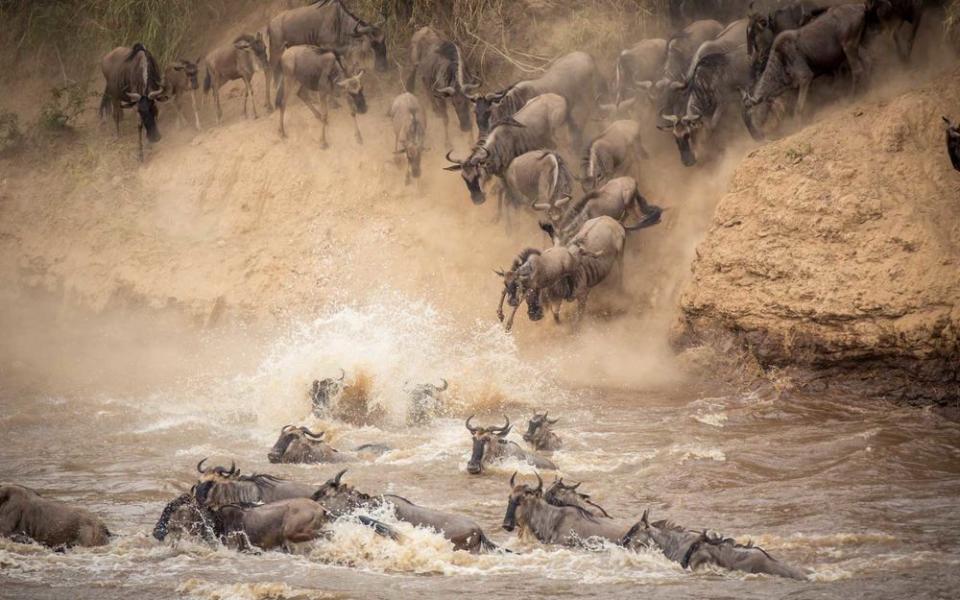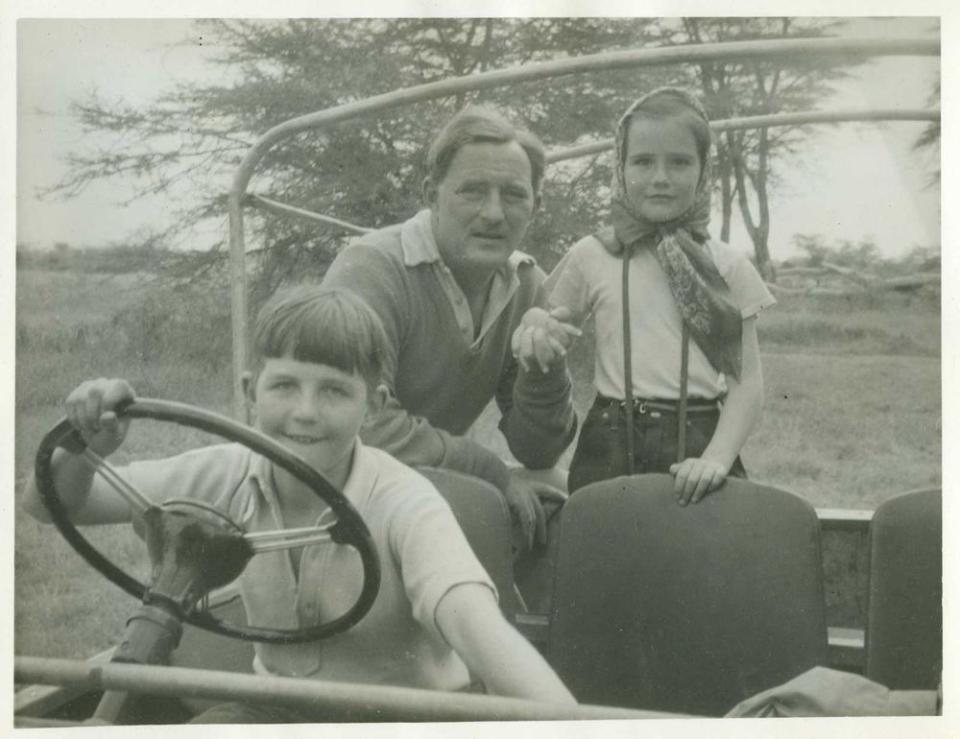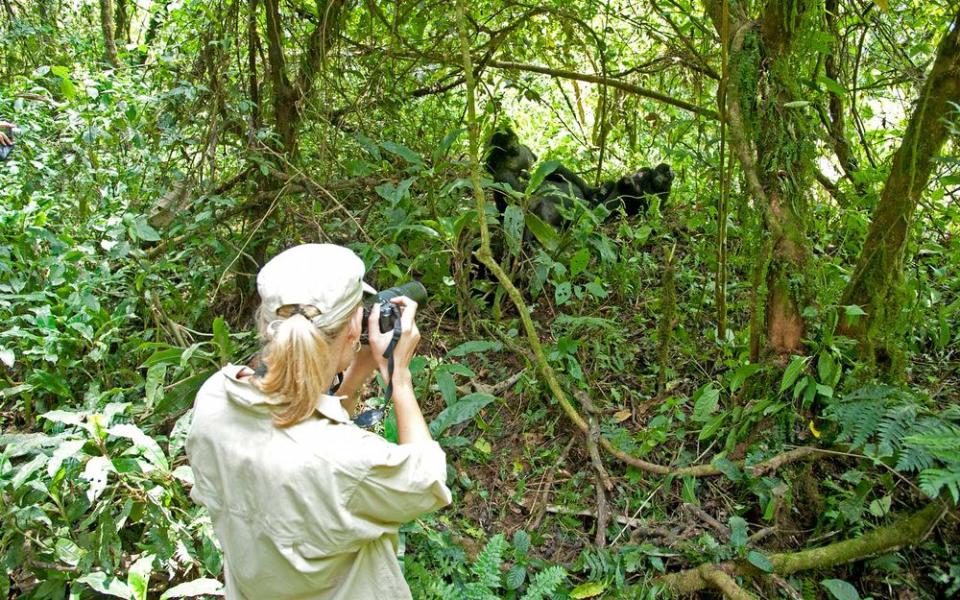Safari Pioneer Geoffrey Kent Talks About Old and New Adventures in Africa
Twenty-five years ago, The Lion King introduced the African savanna to many a Westerner; it also inspired real-world travel to the continent. Ditto on this past summer’s reboot: The Kenya Tourism Board has since reported a rise in safari bookings to locations that inspired the film, from the Aberdare National Park waterfalls (see romantic backdrop for Nala and Simba’s reunion) to Hell's Gate National Park (its formations served as a model for Pride Rock). In fact, the original idea for the film was developed in the bush, specifically on a trip that DreamWorks cofounder Jeffrey Katzenberg — then chairman of Walt Disney Studios — took with Geoffrey Kent.
A pioneer of the modern-day luxury safari (he even wrote a book on it), the Abercrombie & Kent founder grew up in Kenya’s Masai Mara, heart of the Pride Lands. It is here that he launched A&K circa 1962. Twenty years later, he began Friends of Conservation, and two decades ago, he opened the first in a collection of stylish, sustainable Sanctuary Retreats — the newly revamped Olonana. Even more recently, the mobile Sanctuary Kichakani Serengeti Camp has been following the wildebeest migration across the Serengeti.

While the same story is told on screen (albeit with director Jon Favreau’s live-action treatment), the last quarter-century has seen quite a lot of change within the safari landscape; the lion population has been halved, for one. Between whirlwind travels — at 77 years old, he is still on the road at least 250 days a year — Kent took some time to talk about how things have evolved and what’s up ahead.
On the Latest Predators in the Real-Life Pride Lands:
“As a kid, way back when the Masai Mara wasn’t a reserve, we all went down there to hunt. There was wildlife everywhere. So like you guys will go for a picnic or to see the Niagara Falls, we’d go to the Masai Mara and shoot. That’s just how we grew up.

Of course, things have changed — I stopped hunting many, many years ago, and started photographic safaris with the slogan, ‘Shoot with a camera, not with a gun.’ But in those days, there were no rules. You could drive anywhere you wanted — off road, on road, across the border of the Serengeti to Tanzania, which you can’t do anymore. It was an incredible time because you very seldom saw anybody.
I started Abercrombie & Kent in the '60s, and developed the first safari camp. Now, there are 120 lodges in the Masai Mara alone. There are too many being built — the animals can’t sustain that, or having 50 Land Rovers around them at a time.”
On Safari as a Tool for Conservation and Social Impact:

“I believe that around animals, you should always have a low impact with a high yield. You get too many people — it’ll be like all the beaches that are being ruined in Europe. So, in Uganda, we’ve increased the cost of permits to see the gorillas in the Bwindi Impenetrable Forest. Are people still coming? Of course they’re still coming. But we’ve controlled the number of people by making them pay more, and that payment goes through the community.
You have to make sure that the local people benefit. And the local people will then conserve the animals [instead of aiding poachers], as they’ve done at Bwindi; you cannot do it by government decree. We started with only 302 gorillas, and that 302 has grown to about 400. It’s believed that 400 represents half the world’s live mountain gorillas today. And the local people are benefitting. We built a hospital together: It started under a fig tree with one doctor visiting once a week; now it’s full-fledged, with 30,000 outpatients. We have also built schools — all through tourism.”
On the Dangers of the Digital Age:
“Yes, everything has been made easier, but my fear is that the Internet is going to drive a lot of people to unqualified tour operators with just an old safari car lounging around Nairobi and guides who have no experience. Who’s going to sort out the logistics? People get sick, airlines go on strike, things go wrong. And [a] safari is not exactly a danger-free trip — anything could happen.
You know, we handle a lot of Millennials. They’re very tech-savvy; they book everything directly; they know exactly what they’re doing. But some younger people now don’t seem to understand that they’re actually in wilderness — that these are real animals, that this is really wild. They think that when they check into the lodge, they can just go for a run or something. You can’t. We had this lad try to at Sanctuary Olonana. He was pursued by buffalo and chased up a tree, and we found him very, very late at night.”
On Broadening Horizons:
“We’ve done very little in West Africa. I went to Gabon last year, [and] I’m doing a big trip there in November. It’s a fantastic place: The elephants wander on the beaches, hippos swim in the oceans, [and] there’s a huge number of lowland gorillas. It’s completely undisturbed — no lodges yet. So we have to go in, build a lodge, and make sure that money flows to the local people. I’m really excited about that.
I’m also really excited about Angola. The southeast corner flows into the Okavango; as long as it’s mine-free, you’d have a really interesting safari site there. I’ve been working with the Angolan government and the Halo Trust — we want to clear the minefields and set up camps.
We’re looking at Madagascar in a big way as well. It’s a completely unspoiled island. My wife and I went — we saw all the lemurs up at Nosy Be, in the northwest. I’ve got to go down south — they’ve got amazing forests. I’m going to do a big recce. You never know what you’re going to find.”

